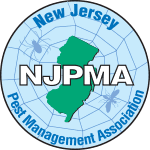CLUSTER FLIES CONTROL

Cluster flies are large sluggish flies, they are also known as “attic” or “grass” flies and are very similar in appearance to house flies. They are about 0.31 – 0.39 inches long and gray, covered with visible yellow, bristle-like hairs. These slow flyers literally “cluster” together, sometimes in the thousands when they flock towards warmth.
Cluster flies are particularly noticeable on warm winter days when they become active and are seeking a source of heat for the winter season. People usually notice cluster flies inside of buildings when they show up dead, in large quantities seemingly overnight. You can also find cluster flies clinging to the outside of buildings, typically on the third story and higher on the side of the building that gets the most direct sun.
Not sure if you have a cluster fly problem? Or maybe you want to learn more about how cluster flies control works. Check out the following boxelder information to clarify some questions you may have.
Library Shortcuts
- Should I be concerned about cluster flies?
- How to identify cluster flies or house flies
- Signs of cluster fly infestation?
- Why do I have cluster flies on my property?
- Can I get rid of cluster flies myself?
- Tips to prevent cluster flies
Should I be concerned about cluster flies?
Though Cluster flies are considered a nuisance as overwintering pests, their presence is an annoyance because of the way they ‘cluster’ together in large amounts. They do not bite humans or animals (other than earthworms), and they do not spread bacteria or lay eggs in food since they are not attracted to filth or garbage. They pose no health threat whatsoever.
How to identify cluster flies or house flies
Adult Cluster flies are often mistaken for house flies, although they are similar in appearance; cluster flies are slightly larger than standard houseflies. The following are some characteristics that may help you identify cluster flies from other similar flies:
- Body characteristics: A cluster fly is a bit larger than a housefly and has a black/silvery-black checkered body. Young, newly emerged cluster flies have short light-brown/yellowish hairs on their lower bodies.
- Sluggish movement: The cluster fly will fly around the home but at a less frantic pace than that of the house fly.
- Overlapped wings: When at rest, the cluster fly will overlap its wings; the house fly’s wings remain separate.
- Clustering at windows: If there is a large population of cluster flies, they tend to cluster along with windows or inside attics and usually in little-used areas on warm, sunny days.
Signs of cluster fly infestation?
The most obvious sign of a cluster fly infestation in your home is to see a large quantity of lame or dead flies. It’s also very common to find them in your loft, in sunken spotlighting, or under insulating felt layers. Cluster flies typically return year after year, unless eaves and other entryways are adequately sealed.

Why do I have cluster flies on my property?
Though these pests are larger than the average house fly, they are capable of crawling through small openings in the walls of a structure; such as doors and windows, loose electrical outlets, roof eaves, openings around cables, pipes, and through vents. Once inside, they tend to stay in unused areas, such as in the attic, in order to hibernate on cold days. However, on warmer days, they become more active and may be seen in other areas around your home. Cluster flies may group together when they settle down in the lesser-used areas of your house.
Can I get rid of cluster flies myself?
There are many things you can do to remove cluster flies in a property, some are more effective than others. The following are some options you could try:
- Vacuuming; vacuum and suck up any and all cluster flies you see around your windows, doors, or other areas. This won’t eliminate the problem but will reduce the overall population.
- Vinegar; has been known to be useful not in terms of killing cluster flies but rather used as a cleaning agent around dirty trash cans or garbage dumpsters.
- Cleaning up clusters; will not only take away possible hiding places for cluster flies, but it would also make it harder for other pests to take shelter in your home.
- Fly strips; if see a lot of cluster fly activity in some areas, consider using those sticky fly strips. They work extremely well because cluster flies aren’t too smart and are very slow-moving, so they’ll get stuck on them and perish.
Tips to prevent cluster flies
It is generally said that prevention is better than cure, but in the case of the cluster fly, this adage is of little use. It’s unlikely you’ll be able to fully prevent cluster flies from living inside your home, as these pests can sneak in through tiny cracks in your attic or through windows and doors. But still, you can limit your chances of dealing with cluster flies by filling in all visible cracks and holes in your home’s exterior with caulk, and replacing any torn window screens and vents before the cooler months arrive.

Want a Free Estimate?
Need to Schedule Service?
Have a Questions?
WHAT WILL WE DO?
Our cluster flies control process typically consists of the following stages:
- Confirm or discard the existence of cluster flies in your home through an inspection.
- Identify the factors that may be causing and contributing to the infestation.
- Offer pest control programs to get the problem under control.
- Treat the existing cluster fly population and prevent future infestations.
What our clients are saying
Our Partners and Awards
Service area
New Jersey:
Ocean County
Essex County
Passaic County
Morris County
Hudson County
Bergen County









